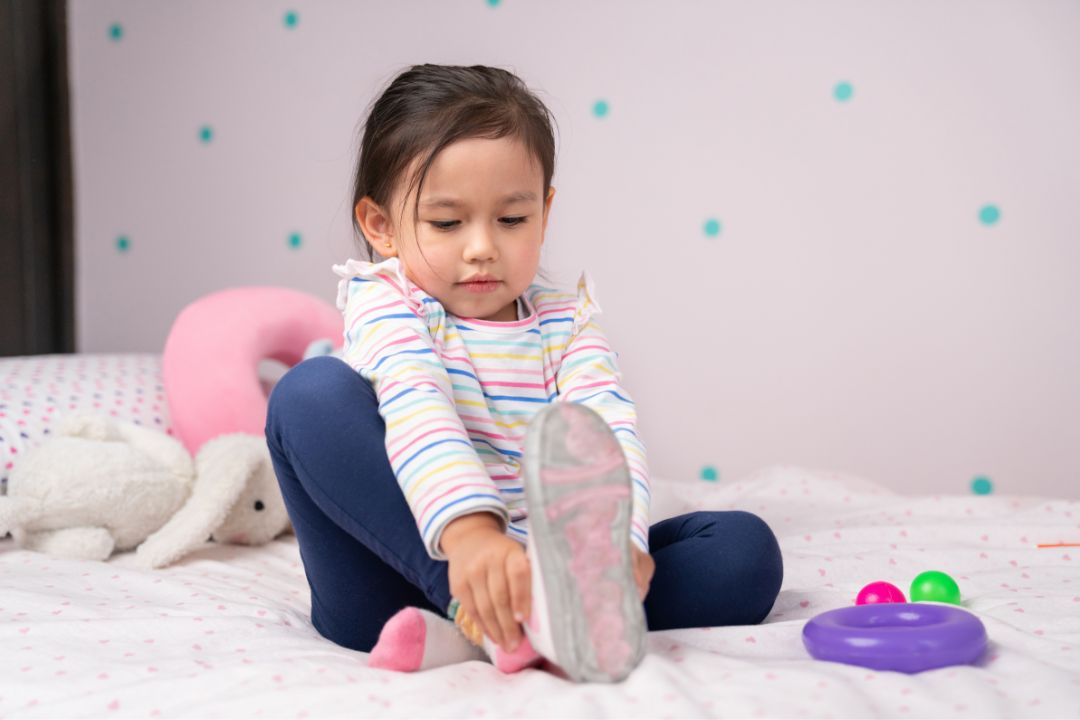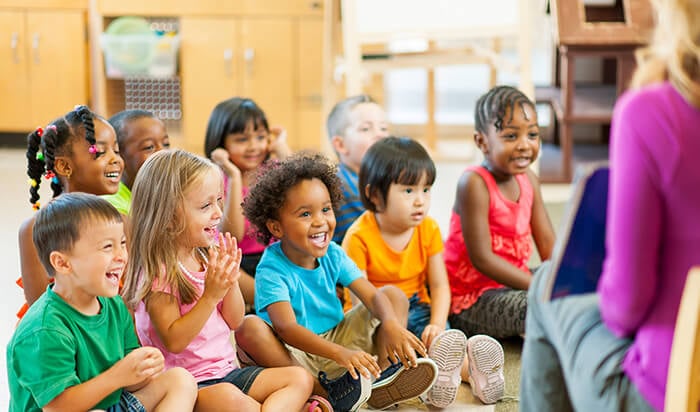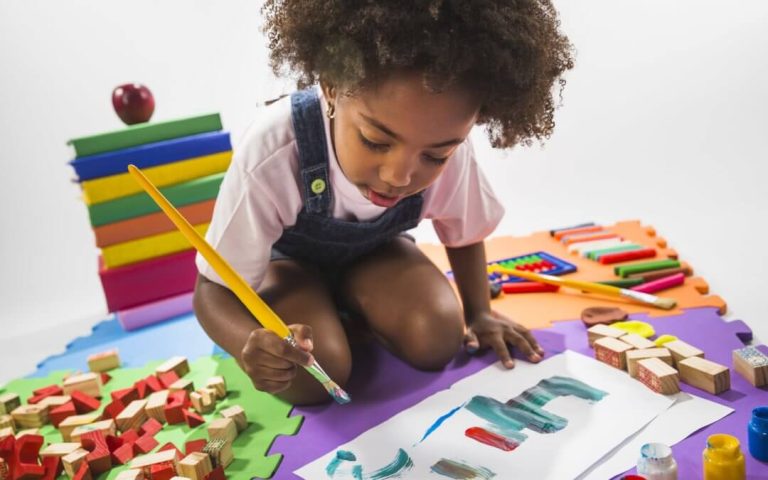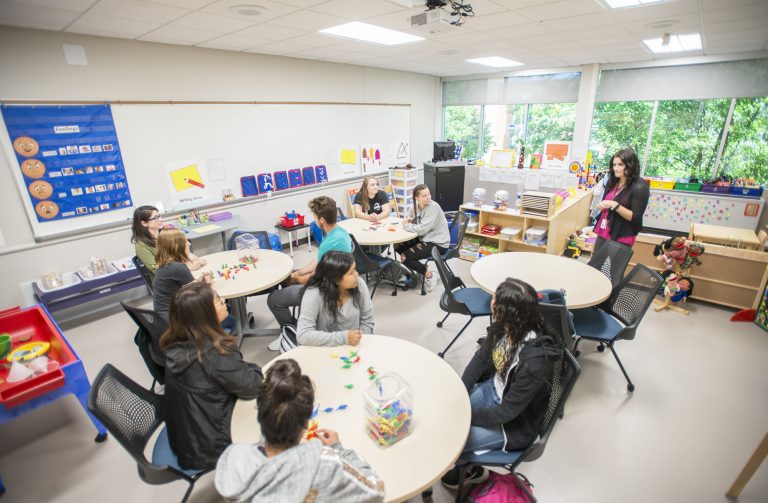When Should We Teach Self-Help Skills To Our Kids

Teach self-help skills to children at an early age to promote independence and confidence. Teaching self-help skills to children is a critical aspect of their development.
By instilling self-help skills in children at a young age, they can learn to perform daily tasks independently, such as dressing, personal hygiene, and organizing belongings. These skills not only enhance a child’s sense of self-reliance but also contribute to their overall well-being.
Moreover, teaching self-help skills at an early stage sets a strong foundation for lifelong independence and responsibility. It empowers children to become more self-sufficient and capable individuals, positioning them for success in their academic, social, and future professional endeavors. We will explore the importance of teaching self-help skills to children and the appropriate age to begin this crucial aspect of their development.
Significance Of Early Self-help Skills Training
Teaching self-help skills to children is a significant aspect of their development, laying the foundation for independence and self-confidence. Early self-help skills training plays a crucial role in equipping children with the necessary tools to navigate daily tasks, fostering their growth into capable, self-reliant individuals.
Importance For Child Development
Introducing self-help skills at an early age is fundamental for a child’s overall development. It enables them to gradually take on more responsibilities, promoting autonomy and self-sufficiency. As children learn to perform tasks independently, they build essential cognitive and motor skills, enhancing their ability to learn and adapt.
Building Blocks For Independence
Self-help skills serve as the building blocks for cultivating independence in children. By mastering tasks such as dressing themselves, tidying up, and personal hygiene, children gain a sense of accomplishment and capability, laying the groundwork for successfully managing more complex responsibilities as they grow older.
Role In Self-esteem And Confidence
The acquisition of self-help skills contributes to the development of a child’s self-esteem and confidence. As they learn to complete tasks on their own, children experience a sense of pride and self-efficacy, bolstering their belief in their capabilities. This positive self-perception forms the basis for healthy self-esteem and a resilient mindset, crucial for navigating life’s challenges.

Identifying The Right Timing For Teaching Self-help Skills
When considering when to teach self-help skills, it’s essential to take into account developmental milestones, individual readiness, and each child’s unique pace. Identifying the right timing can pave the way for the successful acquisition of these vital skills.
Developmental Milestones As Indicators
Understanding developmental milestones can provide valuable guidance when determining the right time to introduce self-help skills. These milestones, such as motor skills development or cognitive abilities, serve as crucial indicators for assessing a child’s readiness to learn and apply various self-help skills, from dressing themselves to feeding and personal hygiene.
Observing Individual Readiness
One size does not fit all when it comes to teaching self-help skills. It’s crucial to observe and evaluate a child’s individual readiness. This involves paying close attention to their cues, interests, and abilities. By observing their actions and responses, you can better gauge when they are primed to effectively learn and practice these essential skills.
Adapting To Your Child’s Unique Pace
Every child progresses at their own unique pace, and this should be respected when introducing self-help skills. Adapting teaching methods and expectations to align with your child’s individual pace can foster a positive learning experience, ensuring that they are not overwhelmed or frustrated. By embracing their unique journey, you can support them effectively as they develop and master these valuable skills.
Breaking Down Self-help Tasks By Age
Teaching self-help skills at the right age is crucial for a child’s development. Tasks such as dressing, brushing teeth, and tidying can be introduced gradually to different age groups. By breaking down these tasks by age, children can learn independence and self-care at an appropriate pace.
Teaching self-help skills is an essential part of a child’s development. It not only fosters independence but also helps them build confidence and self-esteem. When addressing self-help tasks, it’s important to break them down by age to ensure that the skills being taught are age-appropriate and achievable. Let’s explore the breakdown of self-help tasks by age, from the toddler years to school-age children.
Toddler Years: Basic Skills Focus
During the toddler years, the focus is on introducing basic self-help skills that lay the foundation for independence. At this stage, children are learning to master fundamental tasks such as dressing themselves, feeding, and personal hygiene. It’s crucial to provide simple and repetitive tasks that allow toddlers to gradually develop their motor skills and independence.
Preschool: Expanding Responsibilities
As children enter the preschool years, they are ready to take on more responsibilities and learn additional self-help skills. This includes tasks such as using the toilet independently, cleaning up their toys, and being involved in simple meal preparation. Preschoolers thrive on being given specific responsibilities and mastering new tasks, which can empower them and enhance their sense of autonomy.
School-age: Refining And Mastering Skills
During the school-age years, children should focus on refining and mastering the self-help skills they have already learned. This includes tasks such as tying shoelaces, organizing their school materials, managing personal grooming routines, and taking on more complex household chores. By this stage, children are capable of handling a wide range of self-help tasks and benefit from being given the opportunity to demonstrate their mastery.
By understanding the developmental stages of children, we can tailor our approach to teaching self-help skills and set them up for success in becoming independent individuals.
Tailoring Techniques To Your Child’s Needs
When it comes to teaching self-help skills to children, it’s crucial to tailor your approach to each child’s individual needs and abilities. Personalizing learning approaches, using positive reinforcement effectively, and balancing challenge and support are essential strategies to ensure that children develop essential self-help skills at the right pace and with the right support system in place.
Personalizing Learning Approaches
Each child is unique, and their learning needs may vary significantly. By personalizing learning approaches tailored to your child’s specific strengths, weaknesses, and preferences, you can create an environment that fosters the effective acquisition of self-help skills. This may involve utilizing a mix of visual, auditory, and kinesthetic learning methods to cater to various learning styles and abilities.
Using Positive Reinforcement Effectively
Positive reinforcement is a powerful tool for encouraging and sustaining desired behaviors in children. By providing praise, rewards, or other positive stimuli when a child successfully demonstrates a self-help skill, you can reinforce their motivation to continue learning and applying these skills in their daily routines.
Balancing Challenge And Support
Finding the right balance between challenging children to develop new skills and providing them with the necessary support and guidance is crucial. Too much challenge can lead to frustration, while too much support may hinder a child’s independence. By offering an appropriate level of challenge paired with supportive guidance, children can develop self-help skills effectively and confidently.
Essential Tips For Skill Reinforcement
Essential Tips for Skill Reinforcement are crucial in helping children develop self-help skills, fostering independence, and promoting a sense of accomplishment. By providing consistent practice, encouraging problem-solving and decision-making, and knowing when to step back and allow natural learning, parents and educators can effectively reinforce these essential skills.
Consistency In Routine Practices
Consistency is vital in reinforcing self-help skills. Establish regular routines for practicing skills such as dressing, grooming, and mealtime tasks. By engaging in these activities consistently, children can develop a sense of independence and mastery over these tasks. Ensure that the practice sessions are incorporated into the daily schedule, providing ample opportunities for the child to practice and refine their skills.
Encouraging Problem-solving And Decision-making
Encouraging children to think critically and make decisions fosters independence and self-confidence. Provide opportunities for them to solve problems related to self-help tasks, such as figuring out how to button a shirt or deciding what to eat for a meal. By empowering children to make choices and find solutions, they develop essential problem-solving skills and a sense of autonomy.
When To Step Back And Allow Natural Learning
It is essential to know when to step back and allow children to learn naturally. While guidance and support are important, it is equally crucial to provide opportunities for children to explore and learn through trial and error. Allowing natural learning experiences fosters independence and resilience, enabling children to develop a sense of self-efficacy and resourcefulness.
Frequently Asked Questions Of When Should We Teach Self-help Skills
At What Age Should Children Start Learning Self-help Skills?
It’s best to start teaching self-help skills as early as 18 months, but it’s important to introduce basic tasks like putting toys away, self-feeding, and dressing. By starting young, children can develop independence and confidence in their abilities.
Why Are Self-help Skills Important For Children’s Development?
Self-help skills play a crucial role in a child’s development by fostering independence, building self-esteem, and enhancing problem-solving abilities. By mastering tasks like dressing, feeding, and hygiene, children gain a sense of accomplishment and confidence in their capabilities.
What Are The Benefits Of Teaching Self-help Skills At An Early Age?
Early exposure to self-help skills helps children develop essential life skills and fosters independence, self-reliance, and confidence. It also lays the foundation for good habits, promotes problem-solving abilities, and enhances their overall development and well-being.
How Can Parents Encourage The Development Of Self-help Skills In Children?
Parents can encourage the development of self-help skills by providing opportunities for children to practice tasks such as dressing, grooming, and tidying up. Offering praise, patience, and guidance while allowing them to try tasks independently can also foster their self-reliance and confidence.
Conclusion
Teaching self-help skills in childhood is crucial for a child’s development. By cultivating independence, resilience, and confidence at an early age, we empower them to navigate life’s challenges with ease. It’s important to integrate these skills into the education system to foster well-rounded individuals ready for the future.

With over 20 years of experience in early childhood education, Jane brings a wealth of knowledge to Classroom Journey. She specializes in play-based learning and has a passion for inclusive education.





